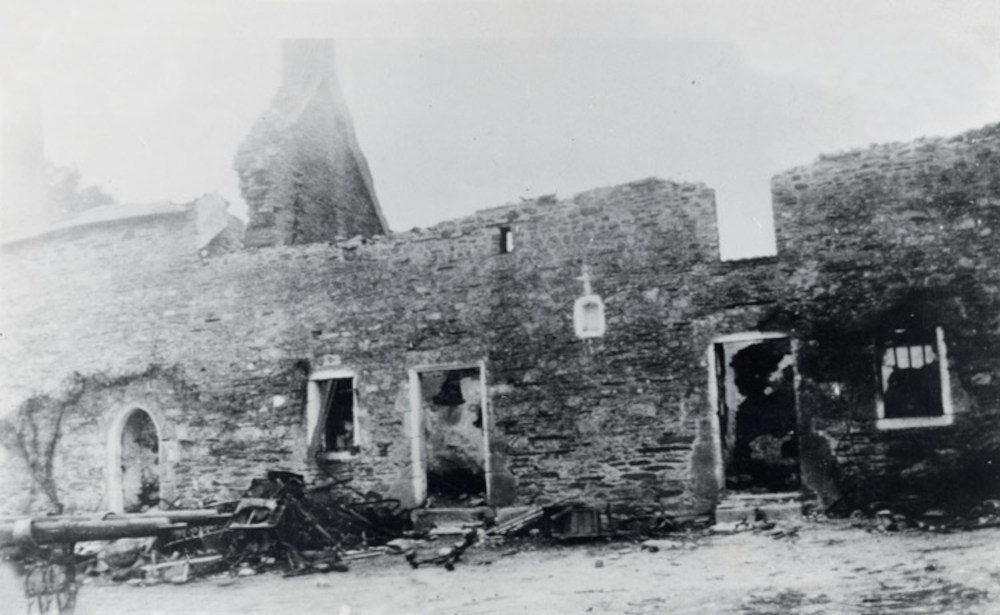What pushes a group of simple soldiers to murder 40 civilians in a tiny village in North Finistère? As well as orders from the Wehrmacht and nazification, there are other factors at play when it comes to the psychology of group murder.
First of all, Germany’s military discipline, inherited from the Prussian military tradition, probably played a crucial role. Soldiers were controlled, blinkered and heavily sanctioned if they did not obey the rules. To refuse an order was to risk one’s life. Solidarity and group spirit were the pillars of primary social groups, of a regiment, encouraging behaviours in each individual. Nobody wished to be left behind, treated like a coward, or find themselves cast out of the primary group. This group influence led some soldiers to commit crimes they would never otherwise have committed.
The context is also part of the explanation. The German soldiers were under siege. They knew they were almost surrounded and that no reinforcements were coming to their aid. All of a sudden the civilians they’d spent the last four years living in close proximity to had become agents of the Resistance and were acting against them. There was therefore a feeling of betrayal, and of revenge. For those German soldiers, their revenge felt totally legitimate because they are acting within their rights. Their military laws not only authorised them to retaliate but above all, since February 1944, obliged them to commit such atrocities.
In Gouesnou on 7th August, once the resisters’ attack was over, the Germans had control of the village, the land and its inhabitants. The Allies were only several miles away, but in the fog of wartime they may as well have been several thousand miles away. The Germans therefore decided to take the hostages outside the village, away from prying eyes, to a macabre, almost closed-doors setting where no one would be able to witness the massacre. There was no written proof, and above all, there were no witnesses, paving the way for total impunity and total abasement. The bodies were first mutilated with grenades, then the executioners tried to set fire to the mass grave to make it disappear.
The Penguérec massacre therefore resulted from a series of factors, as well as a context that was tragically favourable towards a massacre carried out by soldiers from the 805th Marine-Flak-Abteilung, even though it was not a unit generally charged with that sort of crime as a mission, in contrast to the protagonists of the Oradour-sur-Glane massacre, who were not only members of the Waffen-SS, but also veterans of the Eastern front and well-versed in such atrocities.
Translation: Tilly O'Neill


